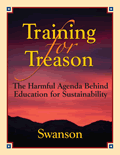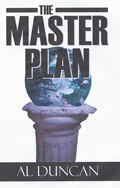PART 6
By Shirley Edwards
November 24, 2013
NewsWithViews.com
The Good, The Bad, and The Ugly
Britain and Remembrance
These are my views as a woman living in England, on how the culture and spirit of my country has changed over 50 years. Why the country does not feel protected or strong any more, how it has lost, and is losing it values and decency, and how we are daily losing our free speech.
Upper Slaughter is a sleepy little village which lies tucked away near to Bourton-on-the-Water in the heart of The Cotswolds. A local tourist area, it is reminiscent in part of a forgotten era so different from the urban jungles of city life which dot the United Kingdom’s cities and sprawling suburbs. The mellow yellow Cotswold stone of the houses, with its small inland streams, set amidst the surrounding green fields and hills, somehow take you back in time and offer a breath of fresh air from urban living. It is a thankful place to feel alive.
Unbeknown to many, Upper Slaughter itself is also officially known as a ‘Thankful Village’. For unlike other towns and villages it does not possess a war memorial to remember the dead. Instead, the village celebrates that all of the men and one woman who lived there and served in both the First and Second World War all returned home.
In contrast, to this place of thankfulness, further north towards the towering spires of Lichfield Cathedral, in Staffordshire, lies another place called Alrewas and The National Memorial Arboretum which is a 150 acre site dedicated to the memory of those whose lives have been lost in conflict since the 2nd World War and did not come home.
Belonging to the Royal British Legion family, there are over 250 memorials here which have been constructed and developed amongst quiet woodland to offer a place of peace and remembrance to those who wish to remember their loved ones. The memorials are in memory of both armed and civilian services.
I visited Alrewas some years ago and remember The Armed Forces Memorial, and also the small chapel in the grounds.
The Armed Forces Memorial was the main focal point and dominated the site. Elevated on a hill and constructed of two straight and two very large curved walls, headed by a tall obelisk, the walls were engraved with the names of over 15,000 soldiers who have died, with room for the same number again. It was sad to see the names of someone’s husband, brother, son or daughter chiselled into the stone.
On one side of one wall was a sculpture of a soldier being lifted up on a stretcher. A smaller sculpture of a child is being comforted by a mother, signifying the loss of a parent. On the facing wall was a naked soldier being prepared for burial. In the background the same soldier is looking through an opening in the wall, as though looking through to another brighter and better land. On the 11th day of the 11th month at the 11th hour a shaft of light shines through the same opening illuminated a metal wreath in the centre of the memorial.
Those who study numerology and symbolism have written about the construction of the site, and also the meaning and relevance of the number 11, in both a negative and positive light. In freemasonry obelisks are regarded as powerful symbols. The building of an Obelisk, was also a monument used by ancient Egyptians who believed if you did not have your name written down somewhere, you disappeared. There are other memorials there shaped like pyramids.
For the majority of people who visit the site, they visit only as an act of remembrance and respect, and sometimes to see the name of their lost loved one.
The small chapel in the grounds conducts a service every day to remember the fallen at 11.00 am and not just on Remembrance Sunday. The chapel is far removed from the grandeur of the large cathedral not far away. There is simplicity inside. A rustic wooden cross with locked handcuffs on one side, and unlocked handcuffs on the other side, hang from its arms. They represent freedom and slavery. In one part of the chapel is a small wooden sculpture called The Story Teller. It has warmth about it. You notice that the children in the sculpture are all listening to a story except for one in the background who is distracted by looking at something which he finds much more interesting.
How poignant that the carving also reads
“The Past is the Key to our Future"
In the South of England, Slapton Sands in Torcross, Devon, also houses the single memorial of a Sherman tank in remembrance of Exercise Tiger, where 749 US servicemen lost their lives whilst rehearsing for the D Day landings and were ambushed by German e boats. The tank was retrieved from the sea in 1984 by Ken Small, a local businessman who discovered the history of the event by accident, and then went to painstaking lengths to retrieve the tank from the ocean floor and uncover the truth. The tank is situated on a car park adjacent to the beach where the practice would have taken place.
There are usually wreaths or messages left there by visitors throughout the year. Some make the journey from America. Ken Small then ensured a memorial was placed on the tank to honour the American soldiers who died there. He received a letter of appreciation from Ronald Reagan thanking him for his efforts.
The people using the beach for picnics, sunbathing and surfing are sometimes unaware of the event which happened, and it is reported that for some years the scale of the tragedy was kept secret.
Far off on the horizon, you will sometimes see a naval ship sailing from nearby Plymouth, also reminiscent maybe of a journey made once in the past in the search for a new and better life.
Although remembrance on the 11th will be observed at churches, the workplace, homes and schools, and the sites I’ve spoken about, the Sunday focal point in the United Kingdom will be at The Cenotaph in London. It is a large, grand, but very sombre event, shown on most main TV channels. It is difficult to not be moved by the steady stream of veteran’s who march past and lay poppy wreaths; the symbol of remembrance.
Attended by royalty, foreign dignitaries and politicians, it is also an event in which a significant number of veterans and members of the public choose not to be associated with. There is something disrespectful about it for some in sharing the remembrance with those who sent them to death. Maybe not everyone is their true brother in arms.
In 2007, there were families who accused the government of being ashamed of the victims of war, after serving soldiers who had been seriously injured were told they could not take part in the march.
Recently, conservative MP, Philip Hollobone, has stated that he would like to see all young people from school leavers to those under the age of 26 once more do national service. A bill has been put forward to parliament for discussion.
He states:
“I believe that the introduction of a modern form of national service would prove popular with the public and be of immense benefit to the young people who take part”
The year of charitable or military service could range from care for the elderly or disabled to work with the emergency services or the armed forces. Those who do not participate would be guilty of a criminal offense.
Stating that it would be a ‘forced’ mandatory law, and criminalizing younger people for non compliance, has not proved popular. Many believe that forced national service would be open to abuse.
Would Mr Hollobone’s suggestions create more division amongst the nation rather than the unity and the service he is trying to enforce? Would national service apply to young people from all cultures and backgrounds living in the United Kingdom today? What would be the punishment for those who did not participate?
The stigma of being called cowardly was severely dealt with during the first world war. The National Memorial site in Alrewas also houses a memorial called ‘Shot at Dawn.’ It remembers 306 British and Commonwealth soldiers who were bound up, blindfolded and shot for cowardice or desertion by their own army. The sculpture is based on the image of 17 year old Herbert Burden who lied about his age and enlisted, but was then later shot for desertion.
Who would give such orders against a young boy whose fear overtook him?
Although I believe most British citizens respect our military as a ‘defensive’ force we need, and are grateful to them, they do not all support or understand the reasons they have been sent to war today, most especially as so many freedoms and ideals we hold dear, have been compromised, forsaken and broken in our country.
Those who respect the sacrifice their ancestors and the military made yesterday and today are also not altogether patriotic. Today some people feel somewhat betrayed by their politicians. As so many people flood in to the country, there seems just as many who want to leave.
In 2010, the prime minister had suggested a pilot scheme called “The National Citizenship Service” which he believed would address the “tragic waste of potential in this country.” He wanted 16 year olds who finished school to take part in community projects that would instil “civic responsibility”
Whilst there exists a generation who see this as taking the unemployed and troublesome off the streets, and developing character, the suggestion could have been hiding other facts.
Community Life Survey records that already 45% in the 16-25 age group volunteer amongst the 16.6 million volunteers in the UK today. Many volunteer to develop their employment opportunities.
Unemployment figures have grown for 16 – 24 year olds to almost 1 million and is recorded as being the highest number in 16 years.
The number of students encouraged into debt in the pursuit of better qualifications to gain employment is recorded as being £20bn according to YouGov SixthSense.
And civic responsibility, has also most certainly grown for the charity, Help 4 Heroes, a non political organization, who provide help and rehabilitation to the hundreds of servicemen and women who return home facing another kind of battle for survival with physical and psychological problems. The country seems to have come together from all different age groups to support the founders of the charity, in providing help to the injured and their families.
The Help for Heroes Rehabilitation Complex at Headley Court, an 8.5 million pound rehabilitation centre was funding entirely by the public by voluntary donations and charitable events.
In terms of responsibility, strength and character, amidst hardship and high unemployment, I believe a lot of our younger generation are trying hard. They are not all a tragic waste. Many join the armed forces. After leaving school, some want the opportunity of searching for their own independent life, development and destiny.
As the United Kingdom prepares for Remembrance Sunday, people seem to have very mixed feelings and thoughts about what freedom and sacrifice represent today. They are respectful, but something stirs if they are watching closely.
Today, some wonder about finding a way to freedom, unrestricted by so many increasing man-made laws and rules, which are creating injustice, division, suppression and confusion.
Is there such a way to this place of peace?
Young
Herbert Burden whose crime was being ‘afraid’.
The secrets of a story lying ‘forgotten’ on the sea bed
in Torcross.
The ‘Thankful’ Village, where the men all returned home,
scarred yet home to a peaceful place, where no memorial to the dead
resides.
| Subscribe to NewsWithViews Daily E-Mail Alerts! |
The simple wooden cross with the closed and open handcuffs, portraying slavery and freedom may offer the answer to those who search for the genuine truth.
We remember those who sacrificed their lives, and rightly so, yet so many do not remember the one who overcame death and evilness.
The battle for our mind and souls may be in the details all around us, but the answer must be found inside.
In the silence which descends on the country on the 11th day of the 11th month, at the 11th hour, will anyone see it, hear it, and pursue it?
Sources:
1-
National
Memorial Arboretum, Staffordshire, England
2- Armed
Forces Memorial
3- British
parliament to discuss bringing back national service (AKA: The
Draft)
4- A Place of Honour: War
Memorial Heritage in the United Kingdom.
5- HISTORIC
UK: Thankful Villages.
6- Thankful villages: The
places where everyone came back from the wars.
7- Exercise
Tiger Remembered
8- UK
Voluntary Sector Workforce Almanac 2013
Click here for part -----> 1, 2, 3, 4, 5, 6, 7,
© 2013 Shirley Edwards - All Rights Reserve
Shirley Edwards was born and lives in Great Britain. She has always worked in administration, but have also taught and studied complimentary health. In administrative roles, she has worked within The Church of England. She also worked for some years as a volunteer within the hospice movement.
Shirley has an interest in all health issues, loves the British countryside, and enjoys writing. She is thankful for talk radio and loves listening.
Shirley has always been concerned about the loss of freedoms in her country, also the demise of America, a country she loves for the original reasons on which it was founded. She believe in the Pursuit of Genuine Happiness.
E-Mail: eshirley02@gmail.com




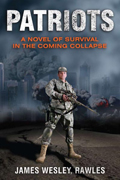
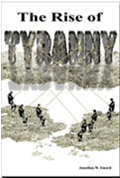
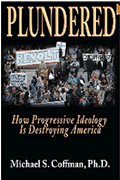






 Share This Article
Share This Article



